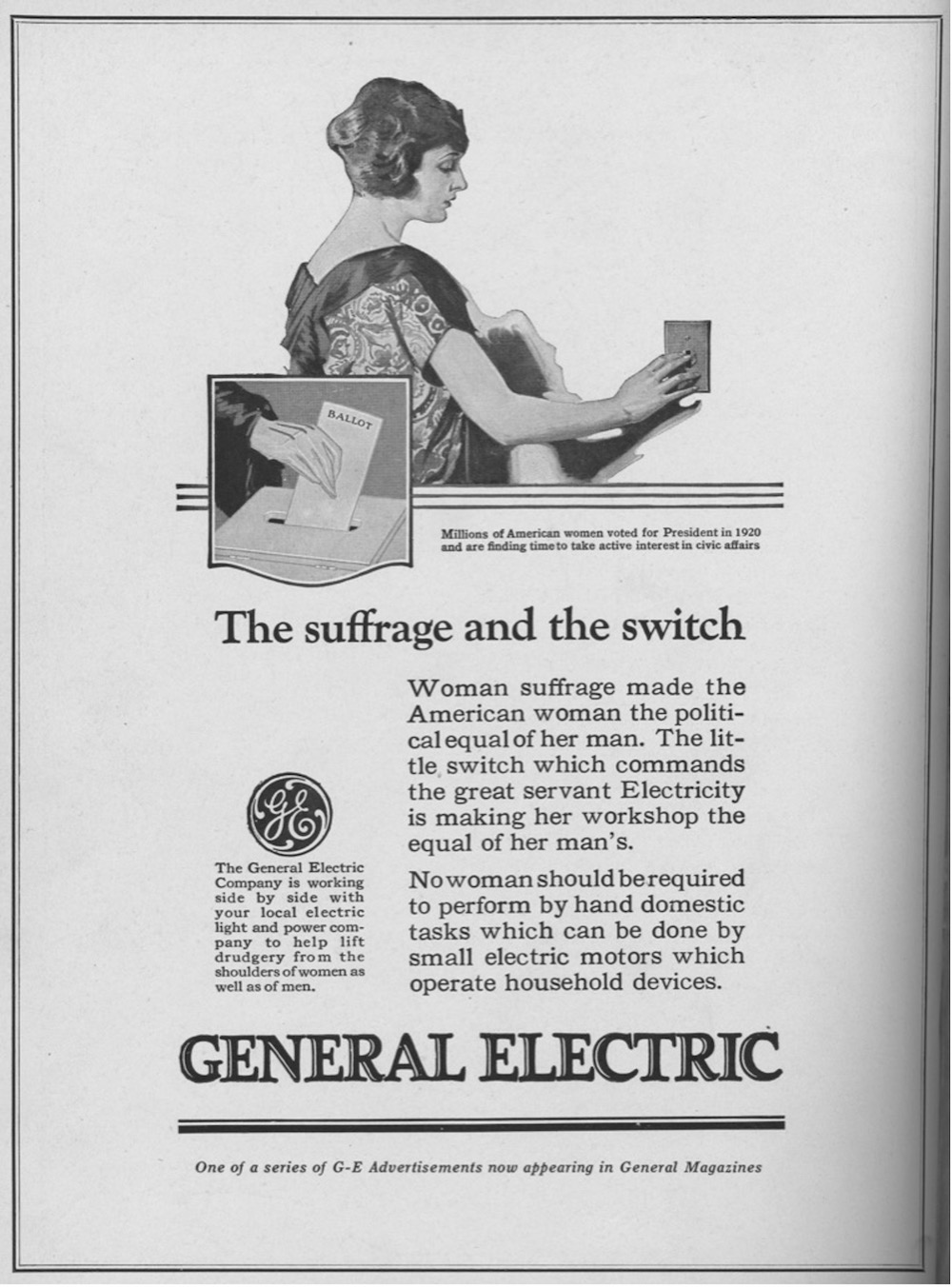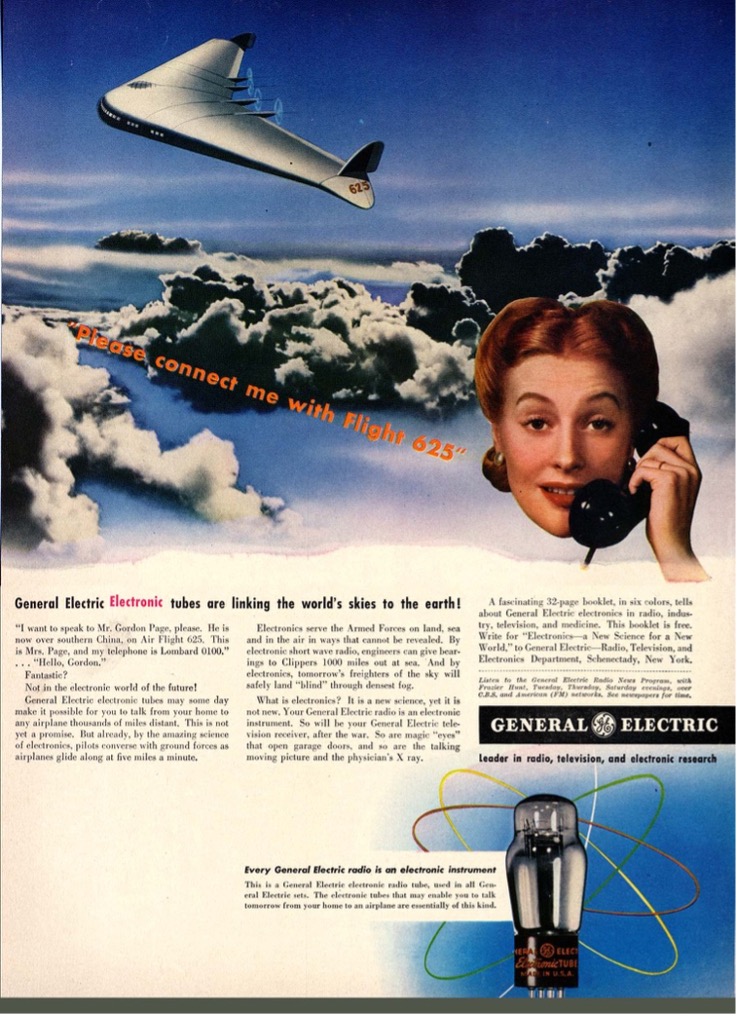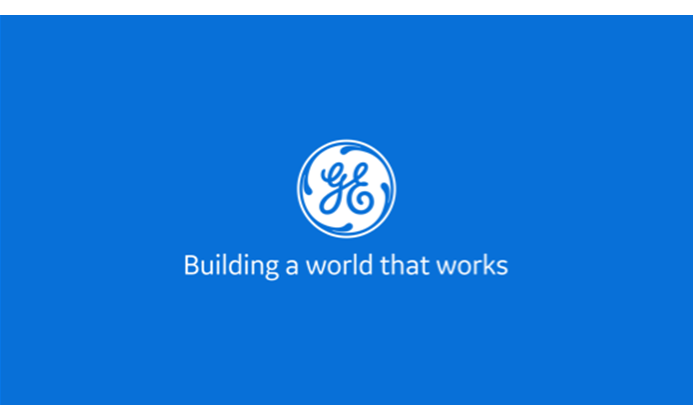This fall, TV viewers witnessed an impressive vision of continuity through change.
The minute-long commercial opens on a solitary student, dozing over a physics textbook in a cavernous library. Startled by a flickering chorus of midcentury Emeralite lamps blinking to life, she looks up as the vaulted ceiling opens into a more expansive dreamscape: steam, clouds, sweeping shafts of light; the rising spire of a skyscraping wind turbine, its graceful rotation echoed in the slow-motion fan blades of a GE9X engine powering a passing jet. As the winds of change bring new horizons, a narrator closes with scientific truth: “The first law of thermodynamics states that energy cannot be created or destroyed,” she says. “But it can be passed on to the next generation.”
“Beautiful Law” is the final ad released by GE, the iconic company Thomas Edison founded at the end of the 19th century, before it launches GE Aerospace and GE Vernova as standalone public companies in spring 2024. (GE HealthCare already spun off from GE in early 2023.) In its bold embrace of the future, the ad, which taps the company’s deep roots in energy and aviation, draws deeply from a storytelling tradition that has defined GE from the start.
“We’re the sons and daughters of Thomas Edison,” says Linda Boff, GE’s chief marketing officer, who has steered GE’s marketing for nearly a decade. “Our brief has always been to ensure that the marketing we do — the advertising, content, creative — is as innovative as GE products themselves. To infuse our work with the same spirit of invention that has always defined the company and the brand.”

A look back to GE’s very earliest efforts in mainstream advertising shows the brand defining itself with charm and a fascination with the emerging technology of every era, from radios and TVs to dishwashers and refrigerators — in many ways channeling the American Century itself. “Even in the very early years, our work emphasized that we were a forward-thinking company,” Boff says. “There was always this sense of being relevant to the time we were in.”

Against the hidebound social mores of early 1920s America, a GE print ad like “The Suffrage and the Switch” flicks at a more equitable company to come, marrying the enlightening power of a light switch to American women’s just-won right to vote. Vintage GE ads of subsequent decades also present a who’s who of cultural luminaries who defined America to itself and the world. It says something that under the same roof of creative output lived Groucho Marx and Mister Magoo, Bette Davis and Frank Sinatra.

Meanwhile, the company’s taglines through the decades — from “Progress is our most important product” to “We bring good things to life” to “Imagination at work” to “Building a world that works” — reflect the company’s central role in adding light where it once was dark, bringing electricity to more homes, and enabling families to take to the skies for business and pleasure. Not to mention sending humans to the moon.

And never to be forgotten is Hedy Lamarr, the confounding talent whose offscreen inventions included the wartime development of the frequency-hopping technology that’s the core of today’s Wi-Fi, GPS, and Bluetooth systems.

Lamarr’s presence in GE’s ads of the postwar era can be seen as a signal effort in the company’s consistently pioneering embrace of new and emerging media. Where in 1954 GE hired a 33-year-old actor named Ronald Reagan to host the national TV program General Electric Theater — to delve into the research, engineering, and manufacturing behind its new innovations — in 2015 it partnered with Oscar-winning producers Brian Grazer and Ron Howard to create the NatGeo series Breakthrough, in which Howard and five other directors went beneath the surface of known innovations to produce six hours of dynamic stories and arresting visuals. That was also the same year GE Podcast Theater debuted its tech-savvy science fiction drama The Message.

These moves into more imaginative spaces and emerging media like Vine and Instagram harken many decades back, even to a successful venture into the whiz-bang world of comic books, for which the company enlisted Batman artist George “Inky” Roussos and others to create the enormously successful true-life Adventures in Science. Through such efforts GE learned to value its good fortune in making products that exert their own magnetic pull on certain segments of society — a key to enabling what Boff calls “borrowed equity and cultural relevance.”

“This means letting outsiders bring their own interesting perspective and lens to what we do,” she explains. These external points of view can range from Oscar-winning directors to the British science geeks behind YouTube phenomenon The Slow Mo Guys, a duo who visited GE’s Global Research labs to capture a video of magnetic liquid meeting a new superhydrophobic surface; it racked up 14 million views. “I think our job in marketing has been to find the kaleidoscope of ways in which to tell those stories, always staying true to our DNA but with a modernity and relevancy,” Boff adds.
GE has done this with cutting-edge sound in the SoundCloud EDM track “Drop Science,” which DJ Matthew Dear spun from thousands of hours of ambient recordings from GE plants. They’ve done it with aerial video, by equipping employees at five U.S. factories with gear to capture drone footage within those plants. They’ve even forayed into haute couture, giving designer Zac Posen access to the 3D printing process that builds parts for the GE9X engine so he could use it to create 3D manufactured gowns worn at New York’s Met Gala. And at the end of 2022, GE made one of its biggest splashes in print media ever, partnering with The New York Times to create a historic edition of the storied newspaper with the first-ever print ad takeover, dedicating 27 full pages to GE technology and employees.

“There’s no question that what GE does is important to the world,” Boff says. “The challenge has always been, as one of our agency partners put it, to make the important interesting.” As GE has reinvented itself again and again over 132 years, the story of its brand has also evolved. With the company preparing to form three independent, industry-leading companies sometime early in the second quarter of 2024, the brand’s DNA will provide a foundation for GE Vernova, GE Aerospace, and GE HealthCare to continue telling stories of innovation while shaping their own new narratives. It’s a tale winningly spun by director Frederic Planchon in the “Beautiful Law” spot, which rounds out GE’s opening epoch on a stirring, hopeful note.
“The ad is emotional because it’s also a love letter to GE,” Boff explains. “And it’s stirring because it reflects the pride and love we have for this company and what it will do in the future.”
Now that future is up to the marketers and communicators at the three independent companies who carry that DNA into the next generation. “The line that we ended ‘Beautiful Law’ on — ‘GE, once, now, forever’ — is so true,” Boff says. “And the fact that the company is reinventing itself as three separate GE-branded companies is, in many ways, the greatest innovation of all.”
Thanks to Chris Hunter of the Museum of Innovation and Science in Schenectady, New York, for his assistance with this article. All print ads courtesy of Museum of Innovation and Science.





